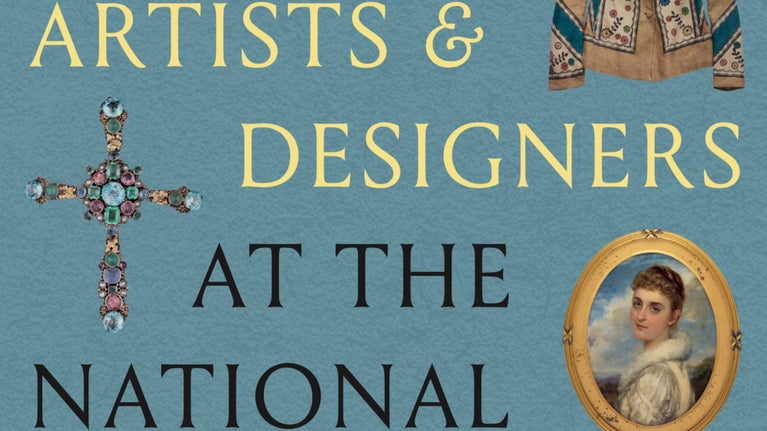
Women Artists & Designers at the National Trust
From unknown amateur artists to lauded professionals, this book celebrates the lives and artwork of women from over six centuries whose creativity has shaped the collections in our care.


The history of art is seldom told through the accomplishments of great women artists. Learn more about some of the finest and most successful professional female artists, with examples of their work on display at the places we care for.
There are many fascinating stories of great women artists to uncover. Rachel Ruysch fetched exorbitant sums for her still lifes, often outselling Rembrandt; Rosalba Carriera popularised pastel portraiture, taking the medium to unprecedented heights; and Angelica Kauffman was so popular that the word ‘Angelicamad’ was coined to describe the desire to reproduce her work in prints and on porcelain, fans and more.
For centuries, women seeking professional careers in the fine arts were restricted in their opportunities for an artistic education. At times, they were denied art apprenticeships and entry to guilds and academies. They were forbidden to draw nudes from life – a fundamental practice in art training.
Later, institutional barriers gave way to social ones, which proved equally – if not more – restrictive.
Rachel Ruysch (1664–1750) was one of the greatest still life painters of her time. She led a successful career that saw her elected to the painters' guild in The Hague and named court painter to the Elector Palatine in Dusseldorf. So successful was Ruysch that her pictures regularly fetched higher sums than Rembrandt’s. Her sumptuous displays of flora and fauna are rendered with extraordinary attention to detail and scientific accuracy, a reflection of wider societal interests in the natural world.
This still life, from the collection at Dudmaston in Shropshire, presents a luscious arrangement of fruit by a stone plinth. A lizard can be seen eating a bird's egg in the nest in the lower right corner, a commentary on the promise of life and the certainty of death.
Still Life with Fruit, Bird's Nest and Insects by Rachel Ruysch
Rosalba Carriera (1675–1757) was one of the most successful women artists of any time period. Born into a modest family in Venice, she began her career painting miniature portraits on ivory to adorn the inside of snuff-box lids.
In time, she became internationally renowned for her portraits in pastel. The use of pastels had previously been restricted to informal drawings and preparatory sketches, but her mastery of the medium elevated it to a serious and highly admired art form. Her clientele included British Grand Tourists to Venice. Francis Whithed (pictured here) and his cousin John Chute sat for Carriera in 1741. In 1754, Chute inherited The Vyne in Hampshire where both Carriera portraits can be seen.

Angelica Kauffman (1741–1807) was born in Switzerland but settled in London in 1766. She was one of the most prominent artists in 18th-century England and one of only two founding female members of the Royal Academy.
This self-portrait, executed in 1794 in Rome, presents the artist as a kind of female Hercules, choosing not between Virtue and Vice, but between the discipline of painting (traditionally a male-dominated field) and the discipline of music (seen as a feminine convention). It was acquired in 1908 by Rowland Winn, 2nd Baron St Oswald for Nostell in West Yorkshire.
Self-portrait of the Artist hesitating between the Arts of Music and Painting by Angelica Kauffman
Anne Vallayer-Coster (1744–1818) was admitted to the Académie Royale when she was only 26 years old, securing one of only four places allocated to women at a time. Her precocious talent, especially in the depiction of flowers, brought her to the attention of the French court and her most important patron, Marie Antoinette.
Vallayer-Coster was a superb colourist excelling in the depiction of a wide range of still life subjects including silver, shells, game, and in this example at Basildon Park in Berkshire, tools of hunting and gardening.
Garden Still Life, with Implements, Vegetables, Dead Game, and a Bust of Ceres
Elisabeth Louise Vigée Le Brun (1755–1842) was one of the finest painters of her day. An immensely successful portraitist, she represented her subjects in natural, relaxed and intimate poses. Aristocrats, artists and authors alike sat for her, though she is best-known for her portraits of Marie Antoinette.
With the outbreak of the Revolution in 1789, she was maligned by the press and had to flee France. Her career re-flourished in Italy where she painted portraits of English tourists, including Frederick Augustus Hervey. It was Hervey, who built Ickworth in Suffolk and commissioned this self-portrait.
Despite numerous obstacles, these women defied conventions and managed to pursue careers as professional artists. Some of their work can be viewed at the places within our care today.

From unknown amateur artists to lauded professionals, this book celebrates the lives and artwork of women from over six centuries whose creativity has shaped the collections in our care.

Learn about the remarkable women in history linked to the places in our care, from the political player who helped make Charles II king, to the archaeologist who discovered a 7th-century Saxon ship burial.

Learn about pioneering women gardeners from Edith, Lady Londonderry’s rare plants and symbolism, to Kitty Lloyd Jones, one of the first women to train as a professional horticulturalist.

The 13,000 oil paintings in our care are nearly all displayed in the houses of their historic owners. Learn about the stories behind a selection of the artworks and their owners.

Visit the De Morgan Gallery, a partnership with the De Morgan Foundation. ‘Look Beneath the Lustre’ looks at how Evelyn and William De Morgan were inspired to create art.

Masterpieces by Velázquez, Rembrandt, Hieronymus Bosch and El Greco can be seen in the collections at the properties in our care across the UK.